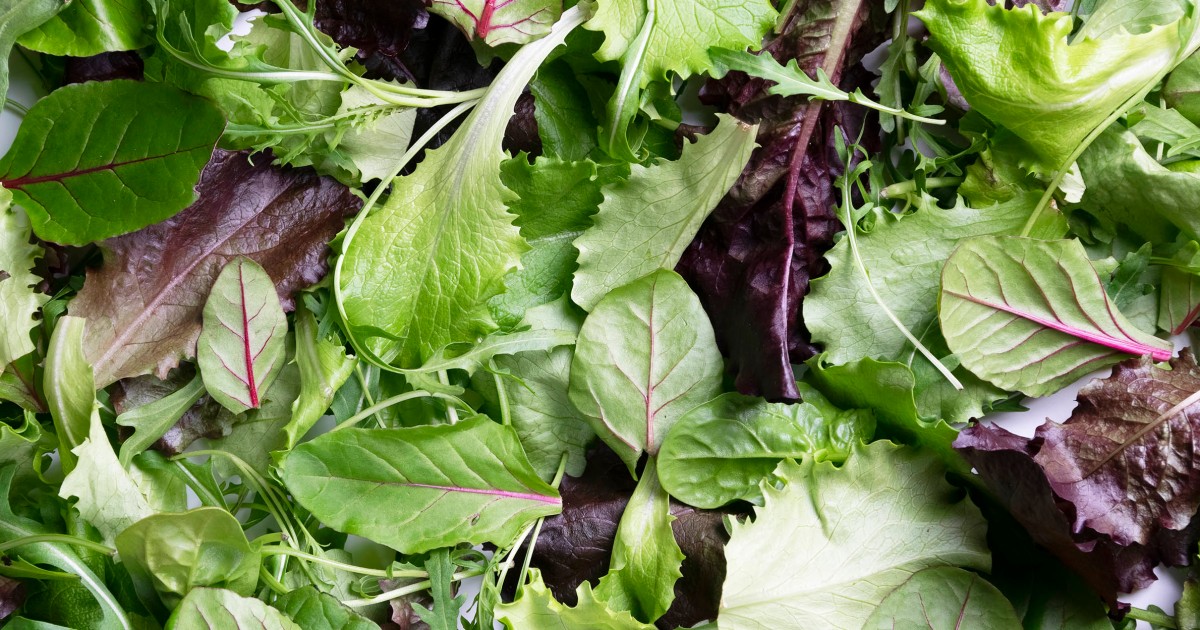Salmon and tuna are both delicious sources of protein packed with nutrients. Some of the most widely eaten seafood in the United States, salmon and tuna are versatile and offer impressive benefits.
Eating fish can help support a healthy heart, brain, immune system, and more. That’s why the the Dietary Guidelines for Americans recommends adults consume at least least eight ounces of fish (or two to three servings) per week.
Whether roasted or grilled, eaten raw in sushi, or from a can, salmon and tuna are great additions to any diet. But which one is healthier? Dietitians compare the nutrition content and benefits of salmon versus tuna and discuss which one is healthiest.
Salmon nutrition overview
Salmon refers to several species of fatty fish which generally fall into two categories, Pacific and Atlantic.
Pacific salmon are mostly wild caught and include sockeye, coho, pink, chum and king (Chinook) varieties. All Atlantic salmon sold in the U.S. is farmed, per the National Oceanic and Atmospheric Administration.
“From a nutrition standpoint, (Atlantic and Pacific) salmon are pretty comparable,” Caroline Susie, registered dietitian nutritionist and spokesperson for the Academy of Nutrition and Dietetics, tells TODAY.com. But wild-caught salmon tends to be slightly higher in protein and omega-3 fatty acids, whereas Atlantic salmon is higher in fat and calories, says registered dietitian Frances Largeman-Roth.
According to the U.S. Department of Agriculture, one serving (3 ounces) of fresh wild sockeye salmon, one of the most popular varieties in the U.S., cooked in dry heat (such as roasting), contains about:
- 155 calories
- 22 grams of protein
- 6 grams of fat
- 3.8 micrograms vitamin B-12 (158% daily value)
- 14 micrograms of vitamin D (71% of daily value)
- 8.6 milligrams of niacin (54% of daily value)
Wild salmon is a great source of protein that’s packed with healthy fats, vitamins and minerals. Salmon has a mild, buttery, and slightly sweet flavor, which is more tender and flakes easily, per the NOAA.
Tuna nutrition overview
Tuna includes several species of large saltwater fish that are commonly eaten around the world. These include skipjack, albacore, yellowfin, bluefin and bigeye tuna.
The nutrition and mercury content of tuna will vary depending on the species. “There are so many varieties and the fat content also differs,” says Largeman-Roth.
One of the most popular types of tuna is yellowfin or ahi, which is leaner and considered sustainable by the NOAA and commonly sold fresh as steaks or canned. According to the USDA, one serving (3 ounces) of fresh yellowfin tuna, cooked in dry heat, contains about:
- 110 calories
- 25 grams of protein
- 0.5 grams of fat
- 92 micrograms of selenium (167% of daily value)
- 18 milligrams of niacin (112% of daily value)
- 0.9 milligrams of vitamin B-6 (53% of daily value)
Tuna is high in protein, low in calorie, and packed with nutrients. Tuna has a firmer texture and a meatier taste, per the NOAA.
Salmon vs. tuna nutrition
Salmon and tuna are both nutritious sources of protein that can be part of a healthy diet. While both offer benefits, there are some key differences.
Omega-3 fatty acids
“The biggest differentiator between salmon and tuna is the fat content. Per ounce, salmon is going to have more fat,” says Susie. Salmon’s higher fat content means it is also higher in calories than tuna, Largeman-Roth adds.
The fat in salmon is mostly healthy unsaturated fats, including omega-3 fatty acids. “Omega-3 fats are associated with boatload of benefits,” says Susie. These include supporting heart health, brain health and eye health, as well as promoting healthy aging and preventing cognitive decline, Susie adds.
Wild salmon is rich in two main omega-3s, eicosapentaenoic acid (EPA) and docosahexaenoic acid (DPA). Omega-3s are essential nutrients, says Largeman-Roth, meaning the body doesn’t produce enough and we need to get them from food.
Sockeye salmon packs about 1.5 grams of omega-3 fatty acids per serving, while yellowfin tuna has roughly 0.1 grams of omega-3s, says Largeman-Roth. Adults should aim to get 1.1-1.6 grams of omega-3s per day, per the National Institutes of Health.
When it comes to healthy fats, “salmon takes the cake,” Susie notes.
Protein
While both fish are excellent sources of protein, tuna tends to have more protein than salmon, Largeman-Roth notes.
Protein is essential for building and repairing muscles and helps with satiety, or feeling fuller for longer, says Susie. Salmon and tuna are both complete proteins, per the Cleveland Clinic, which means they contain all nine amino acids the body needs.
The recommended dietary allowance for protein is 0.8 grams of per kilogram of body weight daily — so for an adult weighing 150 pounds, about 54 grams of protein a day, for example.
Yellowfin tuna provides about 25 grams of protein per three-ounce serving, whereas wild salmon contains about 22 grams. According to Susie, tuna is a “protein superstar” that’s also low in calories and fat.
So if you’re looking for a leaner source of protein, tuna is your best bet, the experts note.
Nutrients
Salmon and tuna are both rich in vitamins, minerals and antioxidants the body needs. However, each fish provides different amounts of these key nutrients.
“A main difference is the vitamin D content,” says Susie. Vitamin D helps the body absorb calcium to support healthy bones and teeth, muscle function, the immune system and more.
Wild sockeye salmon is higher in vitamin D, says Largeman-Roth, providing 14 micrograms (71% of the daily value) per serving, whereas tuna provides 2 micrograms. Salmon is also a great source of vitamin B12, which is essential for DNA synthesis and helps keep the nerves and blood cells healthy, per the NIH.
However, tuna stands out for its selenium and niacin content, says Susie. Selenium is a powerful antioxidant that plays many roles in the body, says Susie, including protecting cells against damage from free radicals and maintaining thyroid health.
Tuna is packed with niacin (vitamin B3), which helps the body convert food into energy, improve blood circulation and lower cholesterol levels, per the NIH. Tuna is also rich in vitamin B6, which is important for metabolism and immune function.
Mercury
Almost all fish contain trace amounts of mercury, which they absorb from the water and fish they feed on, per the U.S. Food and Drug Administration. For most people, exposure to mercury from seafood is not a health concern, TODAY.com previously reported.
However, at higher levels, mercury can be toxic to adults and harm an unborn baby or young child’s development. The degree of mercury exposure depends on the amount and type of fish eaten, per the Environmental Protection Agency.
Salmon is low in mercury and considered a “best choice” by the FDA, which means it should be eaten two to three times per week.
Tuna is generally higher in mercury, says Susie, but it depends on the species. “The bigger the tuna, the higher the mercury content,” Susie adds. Yellowfin and albacore tuna are considered a “good choice” by the FDA, which means it should be limited to once per week, says Susie. Canned light tuna is also on the FDA’s “best choice” list, whereas bigeye tuna is to be avoided.
People who are pregnant or breastfeeding and young children should avoid eating fish high in mercury and opt for lower mercury fish on the “best choices” list, per the FDA.
Is salmon or tuna healthier?
Salmon and tuna are both very healthy options, the experts note, but the healthiest one will depend on your needs and goals.
Heart and brain health: Salmon
If you’re looking for a good source of protein with the added benefits of omega-3 fatty acids for heart and brain health, salmon is the winner, the experts note.
More protein, fewer calories: Tuna
However, if you’re looking to get more protein for less calories and fat, tuna may be the better choice. Tuna’s high protein content can help curb hunger and may aid with weight management, but both fish are good options for weight loss, says Susie.
If you’re concerned about mercury, opt for salmon, or tuna lower in mercury (such as canned light tuna, per the FDA).
Eat both!
The good news? You don’t have to choose one, and experts recommend varying the types of fish you eat to get the most nutrients and benefits. “Knowing that the majority of us don’t meet the recommended seafood consumption, I would love for you to have both,” says Susie.
Canned tuna vs. salmon
Canned fish is more affordable and shelf-stable. Fortunately, canned salmon and tuna contain roughly the same nutrients and benefits as their fresh counterparts, TODAY.com previously reported.
Tinned tuna and salmon are both healthy and great for a quick protein-packed meal, says Susie. Canned salmon will still have more healthy fats and tuna will have fewer calories, but the exact amounts will depend on what the fish is packed in.
When shopping, opt for canned fish that is packed in water or heart-healthy extra virgin olive oil, lower in sodium, wild or safe-caught, and sold in BPA-free cans.
Canned tuna varieties that are lower in mercury include smaller tuna species, such as skipjack, or a mix of these, which may be sold as “light” or “chunk light” tuna.
Read the full article here
















